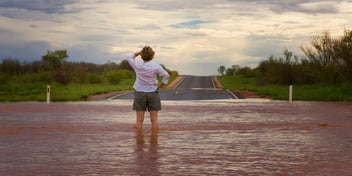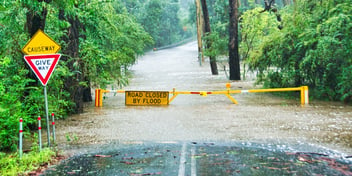As inflows drop, will 'extreme' water restrictions become the norm?
Modelling shows inflows into Australia’s reservoirs will decrease in the coming decades, which means governments must start planning now to mitigate the effects.
This is the message from researchers at the University of New South Wales (UNSW) School of Civil and Environmental Engineering, who modelled the inflows of 222 catchments for the period from 2070 to 2100.
Taking into account increases in temperature and changed rainfall patterns, they found reservoir reliability – or the ability of a reservoir to supply surrounding populations without invoking water restrictions – will fall across the country.
Co-author Professor Ashish Sharma said the study, published in Water Resources Research, confirmed the group’s hypothesis that frequent flood events that once filled dams and catchments are now supplying less water to those areas.
“In our previous research, we found that for each degree rise in temperature, you have roughly 10% to 15% reduction in flood peak,” he said.
“This is despite the fact that with increased temperature, you store more moisture in the sky and hence cause more intense storms.”
Sharma said this is because higher temperatures are drying out the soil faster than before. This means that when it rains, a lot of the water that would have previously ended up in dams is now being absorbed into the earth.
Options on the table
Lower inflows will lead to a three-fold increase in the frequency of water restrictions in Australia by the end of the century, the researchers found, as a drying climate and growing population put more pressure on water resources.
Sharma said Australians should get used to “extreme” actions, such as the Level 2 water restrictions currently in place in much of New South Wales.
“[These] used to be viewed as extreme measures, but the modelling tells us that it’s not that extreme, but rather, a sign of things to come,” he said.
However, an increase in water restrictions would not be enough to ensure supply. Instead, governments should approach the problem from many angles, Sharma said.
For large cities by the sea, desalination plants, recycled water and the installation of rainwater tanks are possible ways to shore up water security. But a different approach would be needed in rural and regional Australia.
“Farmers can’t be supplied water from a desalination plant, and they’re the ones who are facing the brunt of it because the soils are getting dry,” Sharma said.
“So we may need to think about crop management. For example, looking at growing more water-hungry crops in wetter parts of Australia as well as water transfers to drier parts, where viable.
“All of this is by no means easy; these are complex decisions. We need to put all the options on the table and assess which ones make the most socio-economic sense.
“But we need to at least start the assessment process now.”


